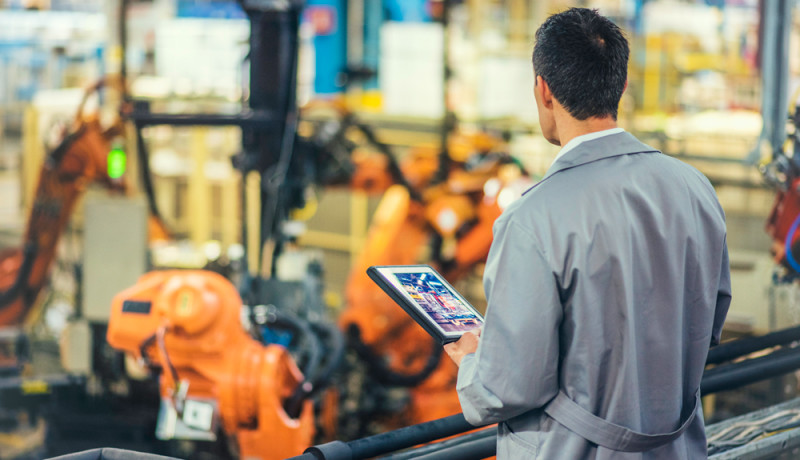Simple smart solutions to solve smart demands
January 31, 2019
on
on

With the Industrial Internet of Things and Industry 4.0 rapidly gaining acceptance in wider industry, a digital transformation is now being seen as the only way to keep pace with modern consumer demands. And it is the delivery, collation, analysis, disbursement and leveraging of this data that is underpinning this new revolution.
There are many definitions of Industry 4.0, but in essence it describes the trend of automation and data exchange in manufacturing, process and production technologies, which include interfacing with themselves, cyber-physical systems, the Industrial Internet of things (IIoT), the cloud (storage and computing) and, a little further along, cognitive computing and AI.
So why is this important? Data plays a huge role in the dynamics of a manufacturing operation, providing the basis for decisions that can have a profound effect on efficiency, efficacy and throughput. Modern, connected, smart factories get this data in real time, meaning that these decisions can be made almost instantly, delivering tangible results far quicker than a weekly progress meeting.
Far from being a short-term fad, or throwaway marketing message that is being used to sell more products, this data connectivity and the smart factory concept are being driven by customers and end users in every country and across almost every conceivable industry and application. For this reason, OEMs that do not supply data-capable machines face the real possibility of being sidestepped in favour of those who do. Without data there is no knowledge and without knowledge there is no progress.
There are many other reasons why contemporary automation systems can deliver benefits in addition to those relating to data. Agility is another primary driver of the smart factory. End users want machines that can be modified on the fly. They want minimal downtime as they switch between batches or products to cater for consumer fads and they want to be able to reduce batch sizes without economies of scale having such a large impact.
This type of agility is only possible with modern automation solutions, such as servo-controlled axes running over digital architectures. Cams and fixed-pitch chains certainly perform admirably in machine applications, but they are legacy technologies that simply do not deliver the capabilities above and beyond their intended single purpose.
There are many definitions of Industry 4.0, but in essence it describes the trend of automation and data exchange in manufacturing, process and production technologies, which include interfacing with themselves, cyber-physical systems, the Industrial Internet of things (IIoT), the cloud (storage and computing) and, a little further along, cognitive computing and AI.
So why is this important? Data plays a huge role in the dynamics of a manufacturing operation, providing the basis for decisions that can have a profound effect on efficiency, efficacy and throughput. Modern, connected, smart factories get this data in real time, meaning that these decisions can be made almost instantly, delivering tangible results far quicker than a weekly progress meeting.
Far from being a short-term fad, or throwaway marketing message that is being used to sell more products, this data connectivity and the smart factory concept are being driven by customers and end users in every country and across almost every conceivable industry and application. For this reason, OEMs that do not supply data-capable machines face the real possibility of being sidestepped in favour of those who do. Without data there is no knowledge and without knowledge there is no progress.
There are many other reasons why contemporary automation systems can deliver benefits in addition to those relating to data. Agility is another primary driver of the smart factory. End users want machines that can be modified on the fly. They want minimal downtime as they switch between batches or products to cater for consumer fads and they want to be able to reduce batch sizes without economies of scale having such a large impact.
This type of agility is only possible with modern automation solutions, such as servo-controlled axes running over digital architectures. Cams and fixed-pitch chains certainly perform admirably in machine applications, but they are legacy technologies that simply do not deliver the capabilities above and beyond their intended single purpose.
Read full article
Hide full article


Discussion (0 comments)